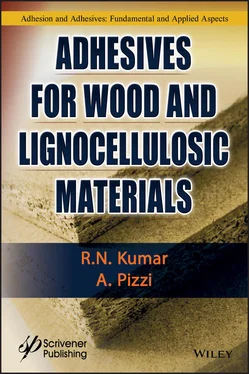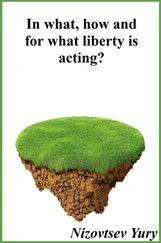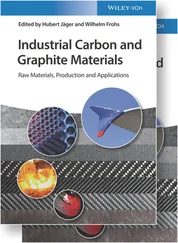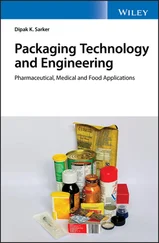Kalnins et al. [44] employed a video-type technique to measure the dynamic contact angle of distilled water as test liquid on wood with measurements conducted at the elapsed time of 3 to 5 s.
Gardner et al. found dynamic contact angle measurements to be useful for determining the effect of wood processing and environmental conditioning on surface energetic [45].
Kajita and Skaar evaluated the wettabilities of the surfaces of some American softwoods species (using cosine 0 as the index of wettability) [46]. Also, the earlywood wet more easily than did the latewood (earlywood has a greater roughness factor and a greater porosity). The wetting angles varied from 68° (eastern red cedar) to 14° (Alaska cedar). The greater wettability of sapwood compared with heartwood was attributed to the extractive content of the heartwood.
Cosine of the advancing contact angle was employed as the measure of wettability. The wettability, pH, and specific gravity were closely related to glue-bond quality of resorcinol-phenolic and urea formaldehyde-bonded adhesive joints [47].
Shi and Gardner developed a wetting model to describe to quantify the adhesive penetration and spreading during the adhesive wetting process [8]. Sapwood and heartwood of southern pine and Douglas-fir were studied. Two resin systems, polymeric diphenylmethane diisocyanate (PMDI) and phenol formaldehyde (PF), were evaluated. It was learned from this study that the wetting model could accurately describe the dynamic adhesive wetting process on wood surfaces. Shen et al. presented a systematic study of surface free energy and acid–base properties of pine ( P. sylvestris L.); for evaluation of the data, the Lifshitz–van der Waals/acid–base (LW–AB) approach was applied [48].
Nussbaum observed a decrease of wettability as a function of time on wood surface after sawing due to the migration of wood extractives to the surface [49]. Gindl et al. compared the applicability of different approaches to determine the surface free energy of wood and found the LW–AB approach to be the most effective among the generally accepted models [50].
de Meijer et al. [51] employed contact angle measurements to calculate the Lifshitz–van der Waals, acid–base, and total surface free energies of wood species spruce ( Picea abies ) and meranti ( Shorea spp.). These species were characterized by low surface energy with a dominant Lifshitz–van der Waals component. The authors report that thermodynamic equilibrium conditions as assumed by Young’s equation are generally not fulfilled with wood surfaces because of chemical heterogeneity, surface roughness, and the adsorption of the test solvent.
An exhaustive review of wettability of wood has been published by Piao et al. [31]. The review also includes calculation of surface tension of wood, Zisman’s critical surface tension, Owens–Wendt’s geometric mean, and Wu’s harmonic mean; Young–Fowkes–van Oss–Good acid–base approaches and the inverse gas chromatography method have been discussed in detail. The review also deals with variables that affect the wettability and surface energy of wood. Detailed overview of literature data obtained on wood surfaces was presented by de Meijer et al. [51].
2.17 Covalent Bond Formation
Covalent bonds between an adhesive and wood are believed to improve bond durability. Although covalent bonds—chemical bonds between the adhesive and wood—seem plausible with some adhesives, they have never been unambiguously detected in an adhesive bondline and no evidence exists that they contribute to the strength of adhesive bonds To determine whether an adhesive forms covalent bonds to wood, it must have the following characteristics: (1) be highly reactive with wood polymer hydroxyls, (2) be capable of permeating the cell wall, (3) exhibit strong wettability to wood, and (4) be amenable to study using a monofunctional model compound. Ideally, the reaction between the monofunctional model compound and wood will produce distinct chemical shift differences between unreacted and reacted wood polymers in solution-state nuclear magnetic resonance (NMR) spectroscopy.
While there is no doubt that adhesive-to-wood covalent bonds can form under specific experimental conditions, the conditions employed in studies reporting such bond formation generally have not corresponded to the conditions commonly used in the bonding of wood, in particular hot-pressing of wood panels [52]. For instance, covalent bonds between wood and a synthetic adhesive can form at temperatures higher than 120°C maintained for 2 h [52]. But extensive covalent bonding appears unlikely in the core of a particleboard, which is able to reach only 115° to 120°C for no more than 1 to 1.5 min when pressed at 200°C for 3 min. Allan and Neogi found in the case of phenol-formaldehyde bonding of wood at 120°C for 2 h that only one adhesive-to-substrate covalent bond was formed for approximately every 1200 cross-links within the resin itself [53]. This was also the case for isocyanate binders, for which the original misconception of a predominance of covalent bonding between adhesive and substrate that has been used to explain the high strength of the panels obtained in that manner was disproved [54, 55].
1. Frihart, C.R., Wood adhesion and adhesives, in: Handbook of Wood Chemistry and Wood Composites, 2nd edn., R. Rowell (Ed.), pp. 255–319, CRC Press, Boca Raton, Florida, 2013.
2. Israelachvili, J.N., Intermolecular and Surface Forces, 2nd edn., Academic Press, London, 1991.
3. van Oss, C.J., Interfacial Forces in Aqueous Media, Marcel Dekker, New York, 1994.
4. Arif Butt, M., Arshad Chautai, A., Ahmad, J.A.R., Theory of adhesion and its practical implications. J. Faculty Eng. Technol., 21–45, 2007.
5. Marra, G.G., Technology of Wood Bonding: Principles in Practice, Van Nostrand, New York, 1992.
6. Browne, F.L. and Brouse, D., Nature of adhesion between glue and wood. Ind. Eng. Chem., 21, 80–84, 1929.
7. Gray, V.R., The wettability of wood. For. Prod. J., 12, 452–461, 1962.
8. Shi, S.Q. and Gardner, D.J., Dynamic adhesive wettability of wood. Wood Fiber Sci., 33, 56–68, 2001.
9. Marcinko, J.J., Phanopoulos, C., Beachey, P., Wood Adhesives 2000, Proceedings No. 7252, pp. 111–121, Forest Products Society, Madison, Wisconsin, 2001.
10. Christiansen, A.W., How overdrying wood reduces its bonding to phenol–formaldehyde adhesives: A critical review of the literature. Part I. Physical responses. Wood Fiber Sci., 22, 4, 441–459, 1990.
11. Christiansen, A.W., How overdrying wood reduces its bonding to phenol–formaldehyde adhesives: A critical review of the literature. Part II. Chemical reactions. Wood Fiber Sci., 23, 1, 69–84, 1991.
12. Stehr, M., Adhesion to machined and laser ablated wood surfaces, Dissertation, KTH Stockholm, Sweden, 1999.
13. McBain, J.W. and Hopkins, D.G., On adhesives and adhesive action. J. Phys. Chem., 29, 2, 188–204, 1925.
14. Deryaguin, B.V., Problems of Adhesion. Vestnik Akademie, 8, 70, 1955.
15. Deryaguin, B.V., Krotova, N.A., Karassev, V.V., Kirillova, Y.M., Aleinikova, I.N., Proceedings of the Second International Congress on Surface Activity—III, Butterworths, London, 1957.
16. Deryaguin, B. and Smiliga, V.P., Adhesion Fundamentals and Practice, MacLaren and Sons, London, 1969.
17. Voyutskii, S.S., Adhesives Age, 5, 4, 30, 1962; Voyutskii, S.S., Vakula, V.L., The role of diffusion phenomena in polymer-to-polymer adhesion. J. Appl. Polym. Sci., 7, 2, 475–491, 1963.
Читать дальше












